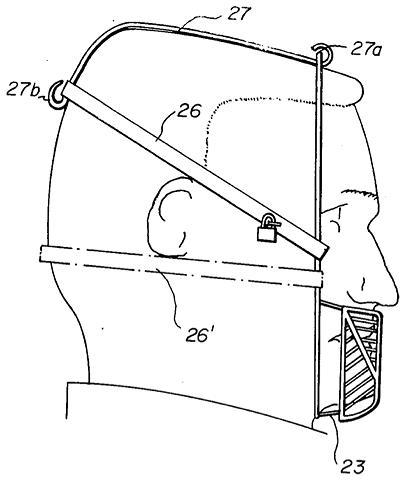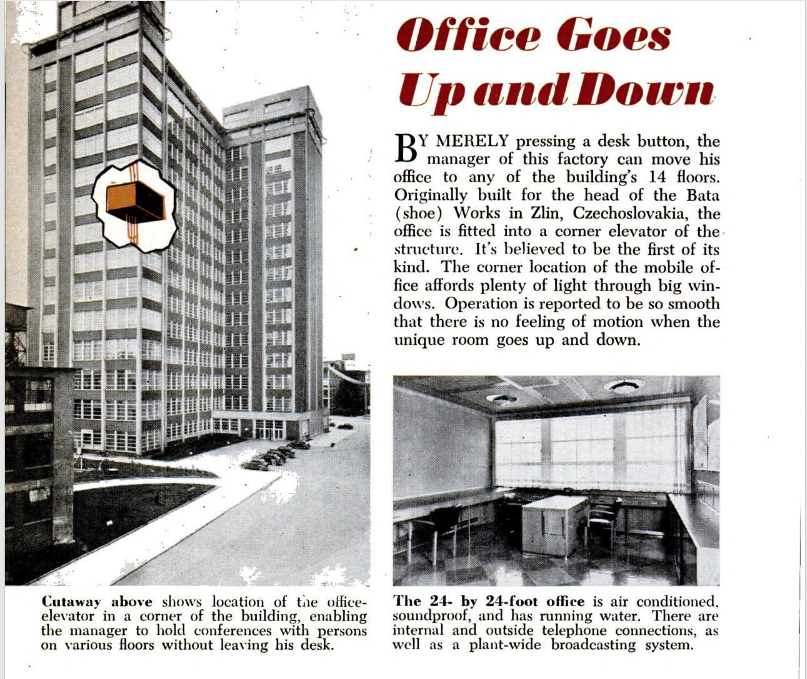Inventions
Mama Robot Device
In 2017, patent number KR20170003315A was granted to a Korean inventor for a "Mama Robot Device". The inventor's name is only given in Korean, so I'm not sure what it is, but Google translates it as Jeong In-pil.The Mama Robot is creepy in many ways. As far as I can tell, it's a device that allows children to punish themselves when they know they've been naughty but their parents are away.
The child is able to decide how many lashes with a cane they deserve, and the Mama Robot will then deliver the punishment. As it does so, the prerecorded voice of the parent will admonish the child, but simultaneously the Mama Robot will weep "such that the sad feelings of the parent punishing are conveyed to the child."
A camera inside Mama Robot will record the entire event and then send the video to the parent's phone, as proof that punishment has been served.
I wonder, how many years of therapy would it take for a child to recover from having Mama Robot installed in their home?

Posted By: Alex - Sun Dec 15, 2019 -
Comments (6)
Category: Inventions, Patents, Robots, Parents
The Ford Skyliner
A hardtop convertible. Just what millions were clamoring for--not!The Wikipedia page.

Jump to the 6:30 mark in the video to see the roof in action.
Posted By: Paul - Sun Dec 15, 2019 -
Comments (4)
Category: Inventions, Chindogu, 1950s, Cars
Laser Windshield Cleaner
Tesla recently applied for a patent to use laser beams to clean a car's windshield. They justify the lasers by explaining that they're needed to make sure the driver-assistance system maintains a clear field of view.It's a long, technical application, which I didn't bother to read completely. So I assume they must have considered how it might be a bad idea to have lasers suddenly blasting away at a windshield while someone is driving the car... or even just sitting in the front seat.
More info: Car and Driver

Posted By: Alex - Sun Dec 08, 2019 -
Comments (3)
Category: Inventions, Patents, Cars
An improved container for shoe polish
Carl Herold of Pittsburgh didn't think it made sense to sell shoe polish in tin containers, because the containers were so expensive that they added substantially to the cost of the shoe polish. So, back in 1872, he came up with a solution, which he patented: pack shoe polish in animal guts.Figure 1 is an elevation of a package of blacking put up in accordance with my invention. Fig. 2 is a transverse section thereof...
The blacking is packed in suitable lengths of animal guts A, which are then firmly tied up at both ends, presenting the appearance of a sausage. Each package should be wrapped in paper to prevent the grease or oil upon the outer surface of the package from soiling the hands in handling it. The blacking thus packed will retain its moisture, and consequently remain in a proper plastic state for a great length of time. In this condition it may be sold by the pound, each purchaser or user providing himself with a small saucer or other shallow vessel into which to empty portions of the package from time to time for use.

Posted By: Alex - Sun Dec 01, 2019 -
Comments (0)
Category: Inventions, Patents, Shoes, Nineteenth Century
Anti-Eating Face Mask

Patent No. 4,344,424, granted to Lucy L. Barmby of Sacramento, California in 1982. From the patent description:
It goes into more detail about who the invention might benefit:
I'm imagining a husband preparing to go to work and strapping the anti-eating face mask on his wife before he leaves.
But couldn't the wearer just lift the mask off? Nope. It's locked on, though "under emergency conditions, the strap may be cut and the face mask of the invention removed."

Edmonton Journal - Oct 8, 2006
The invention reminds me of the Scold's Bridle, aka 'muzzle for ladies,' that some women were forced to wear back in olden times.
Posted By: Alex - Wed Nov 20, 2019 -
Comments (5)
Category: Inventions, Patents, Dieting and Weight Loss
The Songbird Saver
Desmond Slattery (1914-1977) claimed to be a naturalist. But I'm not sure how much scientific training he actually had. I suspect that's just how he rebranded himself after his career in Hollywood fizzled.His 'Songbird Saver,' which he debuted in 1968, was designed to stop cats from attacking birds by conditioning them to think that, if they did so, the birds would explode. As explained in the LA Times (Jan 23, 1969):
Slattery's own news release describes its effectiveness perhaps more vividly:
"Slipping out of the house, the trainee-cat will make its stealthily stalking approach... Seeing it (the Songbird Saver), apparently frozen with terror, the trainee-cat will pounce upon it, and with the resulting explosion, that cat will go about 9 feet in the air and take off for the high timber before its feet touch the ground."
It is with this simple device that Slattery hopes to save civilization "as we know it."
"Songbirds are vital to our ecology of life," he explained. "Our society could not exist without them. Frankly, in six years we'd be up to our neck in insects."
Slattery emphasized his device is harmless to cats and uses merely the same sort of exploding caps used in cap pistols. It is based on common theories of preconditioning and some stuff he read by Mark Twain on a cat's ability to learn.
"It's based, actually, on a combination of Pavlov and Mark Twain. If both those guys are wrong, I'm wrong."
The dapper 54-year-old promoter denied he was "anti-cat" and said that in fact his invention would allow cats and birds to live together in harmony.

El Paso Times - Dec 26, 1968


Los Angeles Times - Jan 23, 1969
Posted By: Alex - Wed Nov 13, 2019 -
Comments (0)
Category: Animals, Inventions, Cats, 1960s
Skin On
Making trackpads feel more like human skin...More info: marcteyssier.com

Posted By: Alex - Wed Oct 30, 2019 -
Comments (0)
Category: Inventions, Technology, Skin and Skin Conditions
Office in an Elevator
This is a genius idea.
Source.
Posted By: Paul - Sat Oct 19, 2019 -
Comments (3)
Category: Business, Inventions, 1940s
Monitor grandma’s health via her butt
A new gadget, the VISSEIRO Smart Chair Pad, promises to allow people to remotely monitor the health of loved ones via a seat cushion. When someone (a grandmother, for example) sits on the cushion, it's able to record various vital signs through her buttocks. It can then send this info to an app on the phone of the granddaughter, offering reassurance that grandma is still alive and doing well.My question is: if the vital signs flatline, how do you know if grandma is dead, or has simply stood up?
More info: visseiro.com

Posted By: Alex - Fri Sep 20, 2019 -
Comments (7)
Category: Health, Inventions
Bacon Vending Machine
In 2018, Ohio State University became home to the world’s first bacon vending machine. It was a promotional stunt dreamed up by the Ohio Pork Council.Although the machine got lots of publicity, I'm having a hard time figuring out what exactly came out of the machine. As far as I can tell, it wasn't a piece of sizzling, freshly-cooked bacon. Instead, it was a slice of pre-cooked, cold bacon. Still, it was bacon.
The stunt was only a limited-time affair, but the machine proved so popular that one is now being installed at Buckeyes' Stadium.
More info: Saturday down South, OSU Agricultural College, OSU Dept. of Animal Sciences

Posted By: Alex - Fri Sep 06, 2019 -
Comments (4)
Category: Inventions, Bacon

| Who We Are |
|---|
| Alex Boese Alex is the creator and curator of the Museum of Hoaxes. He's also the author of various weird, non-fiction, science-themed books such as Elephants on Acid and Psychedelic Apes. Paul Di Filippo Paul has been paid to put weird ideas into fictional form for over thirty years, in his career as a noted science fiction writer. He has recently begun blogging on many curious topics with three fellow writers at The Inferior 4+1. Contact Us |




